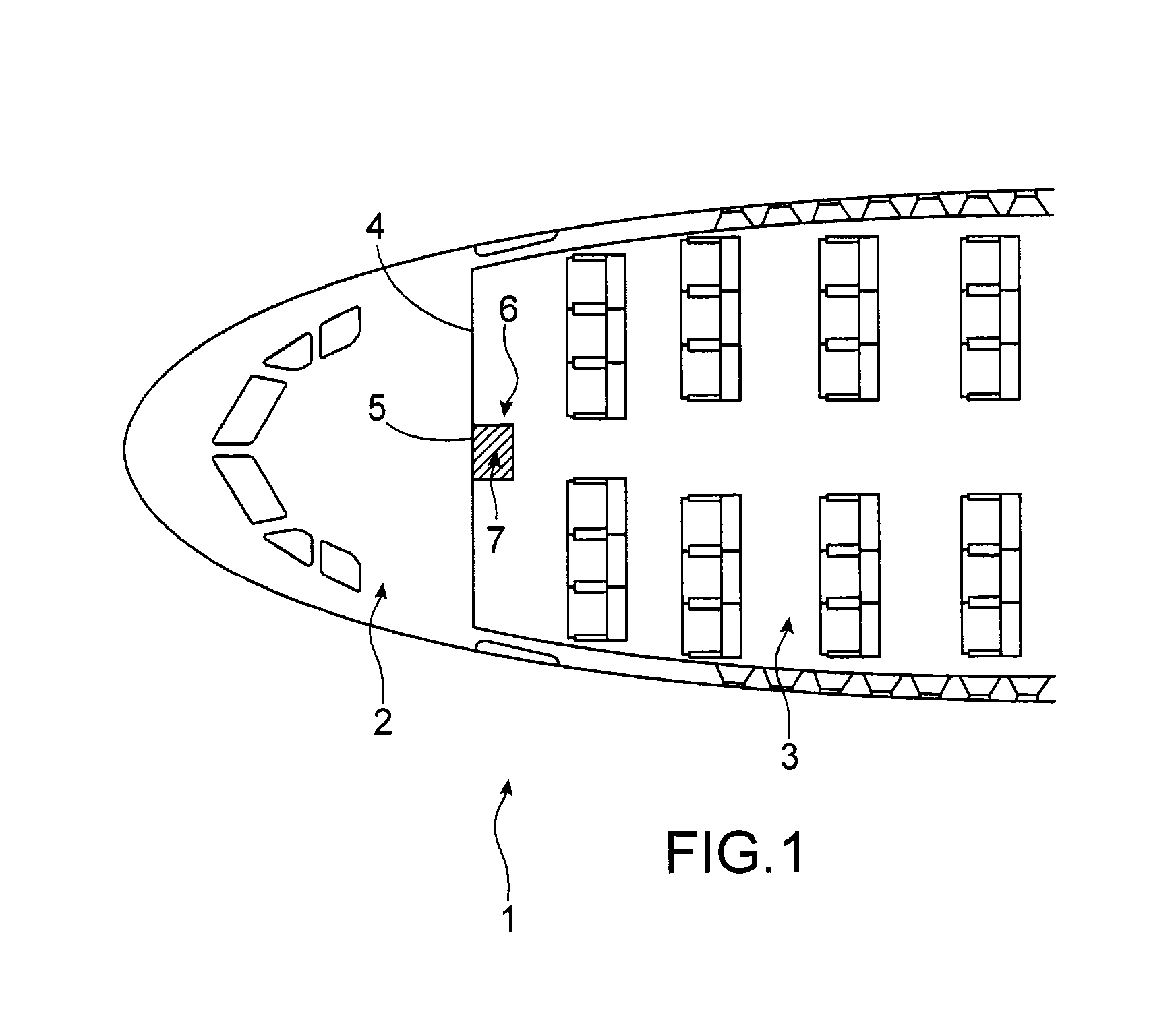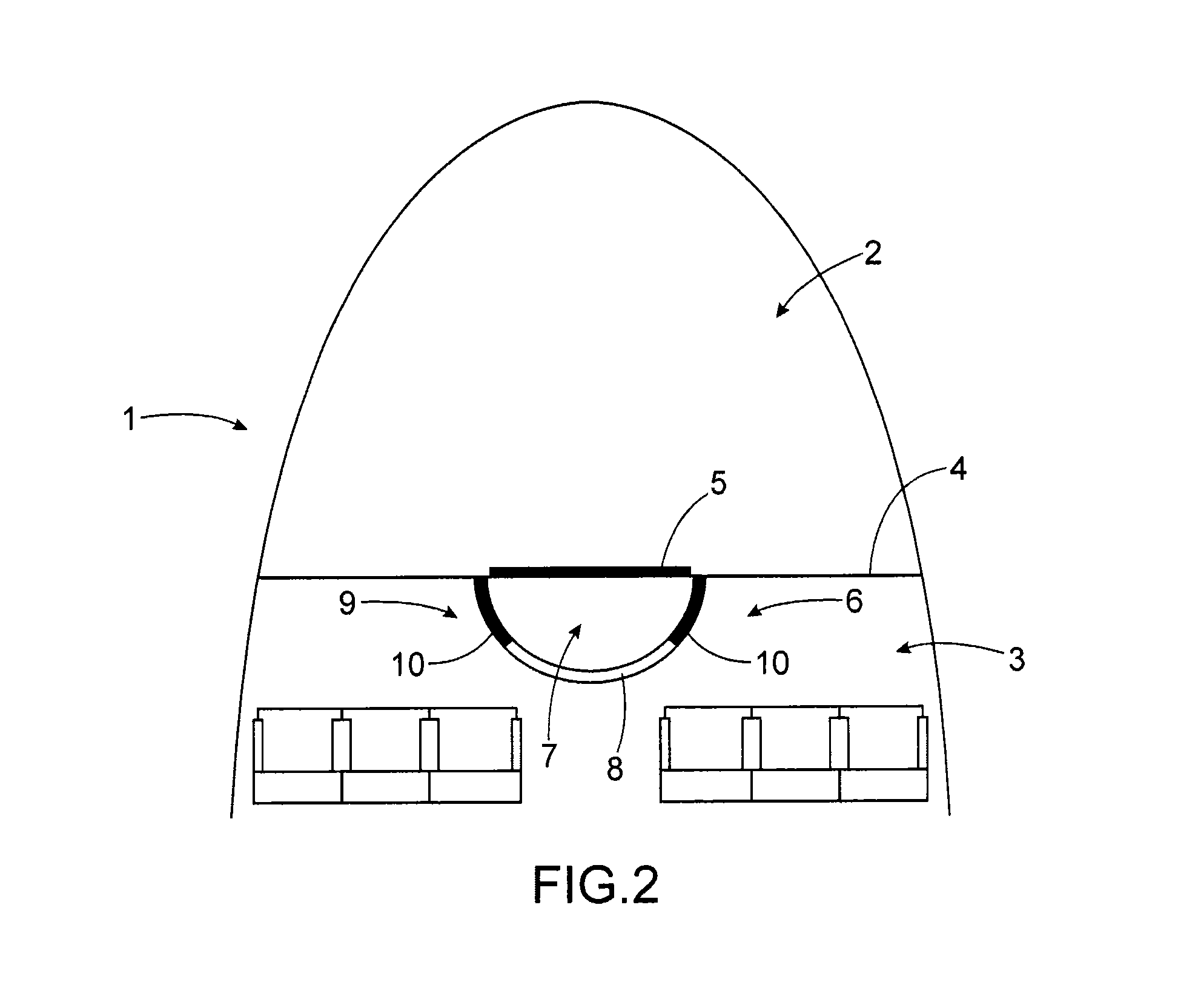Aircraft nose section including a lock for accessing the cockpit
a technology for accessing the cockpit and aircraft nose, which is applied in the direction of aircraft indicators, aircraft accessories, fuselages, etc., can solve the problems of reducing the effective area of the passenger cabin, and the bulk of the safety lock, so as to improve the effect of securing the cockpit access
- Summary
- Abstract
- Description
- Claims
- Application Information
AI Technical Summary
Benefits of technology
Problems solved by technology
Method used
Image
Examples
first embodiment
[0032] said movable element is slidable along an axis parallel to said floor.
second embodiment
[0033] said movable element is slidable along an axis orthogonal to said floor.
[0034]Advantageously, said movable element remains fully located, during its displacement between both said positions, along the perimeter of the transition zone adjoining the passenger cabin.
[0035]By perimeter of the transition zone adjoining the passenger cabin, it is intended the line along which are extended the separating means when said movable element assumes the extended closing position. The area of the transition zone is defined by the area defined by the cockpit door on the one hand and the separating means when said movable element assumes the extended closing position on the other hand, and obtained along a cross-section parallel to the floor plane of the safety lock. The floor plane of the safety lock is defined as a plane orthogonal to the aircraft plane of symmetry.
[0036]According to the invention, said movable element extends, in the extended closing position, along the entire perimeter o...
PUM
 Login to View More
Login to View More Abstract
Description
Claims
Application Information
 Login to View More
Login to View More - R&D
- Intellectual Property
- Life Sciences
- Materials
- Tech Scout
- Unparalleled Data Quality
- Higher Quality Content
- 60% Fewer Hallucinations
Browse by: Latest US Patents, China's latest patents, Technical Efficacy Thesaurus, Application Domain, Technology Topic, Popular Technical Reports.
© 2025 PatSnap. All rights reserved.Legal|Privacy policy|Modern Slavery Act Transparency Statement|Sitemap|About US| Contact US: help@patsnap.com



